News From Scotland
A Wee Dram?
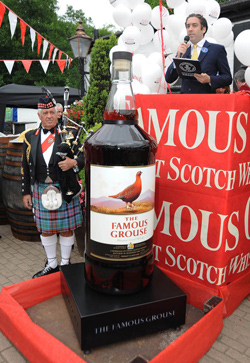 The bottle stands 5’5″ tall and is filled with Famous Grouse whisky. Bottle after bottle was poured in by hand, taking more than three hours to fill! Fomous Grouse is now in the Guinness Book of World Records for the biggest bottle of whisky. It was part of their 107 anniversary celebration. The bottle will be on permanent display at the Glenturret Distillery in Crieff.
The bottle stands 5’5″ tall and is filled with Famous Grouse whisky. Bottle after bottle was poured in by hand, taking more than three hours to fill! Fomous Grouse is now in the Guinness Book of World Records for the biggest bottle of whisky. It was part of their 107 anniversary celebration. The bottle will be on permanent display at the Glenturret Distillery in Crieff.
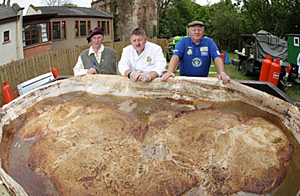 It would have gone well with the world’s largest haggis, made in Mauchline, Ayrshire. The haggis weighed in at about 1200 pounds. The big challenge was cooking it and lifting it without splitting the skin!
It would have gone well with the world’s largest haggis, made in Mauchline, Ayrshire. The haggis weighed in at about 1200 pounds. The big challenge was cooking it and lifting it without splitting the skin!Edinburgh University and the Higgs Boson
Prince William installed as Knight of the Order of the Thistle
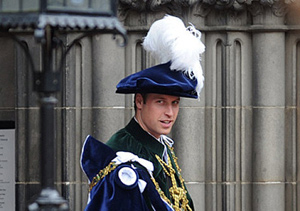 The most ancient and most noble Order of the Thistle is the highest honor Scotland can bestow. It is the Scottish equivalent of the Order of the Garter, but fewer people are installed into the Order of the Thistle. The number of knights is limited to 16, and a new one is appointed whenever a knight passes away.
The most ancient and most noble Order of the Thistle is the highest honor Scotland can bestow. It is the Scottish equivalent of the Order of the Garter, but fewer people are installed into the Order of the Thistle. The number of knights is limited to 16, and a new one is appointed whenever a knight passes away.
Prince William joins family members already in the order: HRH Queen Elizabeth II, HRH Prince Charles Prince of Wales, HRH the Duke of Edinburgh, and the HRH Princess Anne Princess Royal.

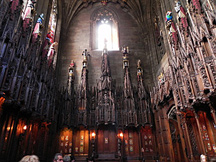 The ceremony took place in one of Edinburgh’s best-known landmarks, the Chapel of the Order of the Thistle, in St. Giles’ Cathedral. The chapel was only recently added to St Giles’ Cathedral, just over a century ago, but it is one of Scotland’s most breath taking architectural treasures.
The ceremony took place in one of Edinburgh’s best-known landmarks, the Chapel of the Order of the Thistle, in St. Giles’ Cathedral. The chapel was only recently added to St Giles’ Cathedral, just over a century ago, but it is one of Scotland’s most breath taking architectural treasures.Elizabeth Bowes-Lyon - The Queen Mum
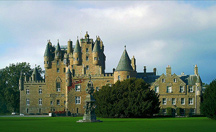 herself came from Scottish nobility, growing up in Glamis Castle, as daughter of the 14th Earl of Strathmore and Kinghorne. She was also related to the Duke of Wellington, who defeated Emperor Napoleon. Her mother was descended from a British Prime Minister William Cavendish-Bentinck, and a Governor-General of India, 1stMarquess of Wellesley, who was the elder brother of that famous Duke of Wellington.
herself came from Scottish nobility, growing up in Glamis Castle, as daughter of the 14th Earl of Strathmore and Kinghorne. She was also related to the Duke of Wellington, who defeated Emperor Napoleon. Her mother was descended from a British Prime Minister William Cavendish-Bentinck, and a Governor-General of India, 1stMarquess of Wellesley, who was the elder brother of that famous Duke of Wellington.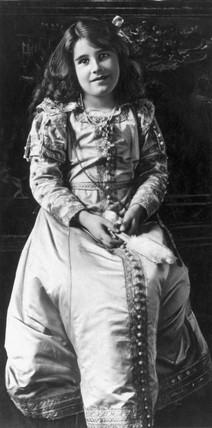 She was educated by a governess until the age of eight. When she was fourteen, Britain declared war on Germany. Four of her brothers served, and her elder brother, Fergus, died as an officer in the Black Watch Regiment. Another brother was captured and held as a POW until the end of the war. Glamis Castle was turned into a convalescent home for wounded soldiers, which the future Queen helped run. One of the soldiers she treated wrote in her autograph book that she was to be “Hung, drawn, & quartered … Hung in diamonds, drawn in a coach and four, and quartered in the best house in the land.”
She was educated by a governess until the age of eight. When she was fourteen, Britain declared war on Germany. Four of her brothers served, and her elder brother, Fergus, died as an officer in the Black Watch Regiment. Another brother was captured and held as a POW until the end of the war. Glamis Castle was turned into a convalescent home for wounded soldiers, which the future Queen helped run. One of the soldiers she treated wrote in her autograph book that she was to be “Hung, drawn, & quartered … Hung in diamonds, drawn in a coach and four, and quartered in the best house in the land.”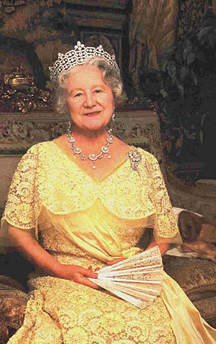 A typical Scot, she was famous for her strong principles, physical courage and sense of duty. Peter Ustinov wrote of her facing a student riot at the University of Dundee in 1968. When students were throwing toilet rolls like streamers, she got out of her car, picked one up, and approached the student who’d thrown it. “Was this yours? Oh, could you take it?” The student was dumbfounded, and the mob quieted and backed away.
A typical Scot, she was famous for her strong principles, physical courage and sense of duty. Peter Ustinov wrote of her facing a student riot at the University of Dundee in 1968. When students were throwing toilet rolls like streamers, she got out of her car, picked one up, and approached the student who’d thrown it. “Was this yours? Oh, could you take it?” The student was dumbfounded, and the mob quieted and backed away.
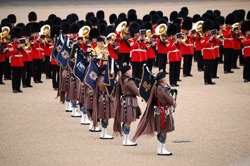 As Army Cadet of the Year, I had the honor and pleasure of being presented to the Queen Mother at a garden party in Buckingham Palace – and she was every bit as others have described her – a true Scot – interested – chatty – hospitable – unassuming – a genuinely charming lady. Among all the uniforms there that day – the Royal Marines Band – the Regiment of Guards – she noticed my hodden grey uniform and came over to chat. Hodden grey, the tartan of the London Scottish Regiment, came from the tartan worn by the common folk in Scotland – made from blending one strand of black wool to twelve of white before weaving – and made famous in Burns’ “A Man’s A Man For A’ That”
As Army Cadet of the Year, I had the honor and pleasure of being presented to the Queen Mother at a garden party in Buckingham Palace – and she was every bit as others have described her – a true Scot – interested – chatty – hospitable – unassuming – a genuinely charming lady. Among all the uniforms there that day – the Royal Marines Band – the Regiment of Guards – she noticed my hodden grey uniform and came over to chat. Hodden grey, the tartan of the London Scottish Regiment, came from the tartan worn by the common folk in Scotland – made from blending one strand of black wool to twelve of white before weaving – and made famous in Burns’ “A Man’s A Man For A’ That”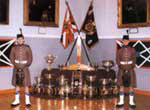

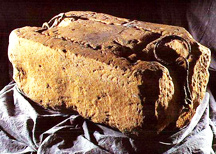 The Stone of Destiny – that ancient royal seat of Scotland, where kings were crowned -may be the Stone of Irvine. One thing is sure, it has moved around a lot in its history. Legend has it being taken by Jacob while in Haran. Legend also has it being brought from Ireland by the Dalriata gaels when they settled Scotland. More likely is the story of Fergus, son of Ferchard, the first King of the Scots in Scotland, bringing the Stone from Ireland to Argyll, where he was crowned on it.
The Stone of Destiny – that ancient royal seat of Scotland, where kings were crowned -may be the Stone of Irvine. One thing is sure, it has moved around a lot in its history. Legend has it being taken by Jacob while in Haran. Legend also has it being brought from Ireland by the Dalriata gaels when they settled Scotland. More likely is the story of Fergus, son of Ferchard, the first King of the Scots in Scotland, bringing the Stone from Ireland to Argyll, where he was crowned on it.